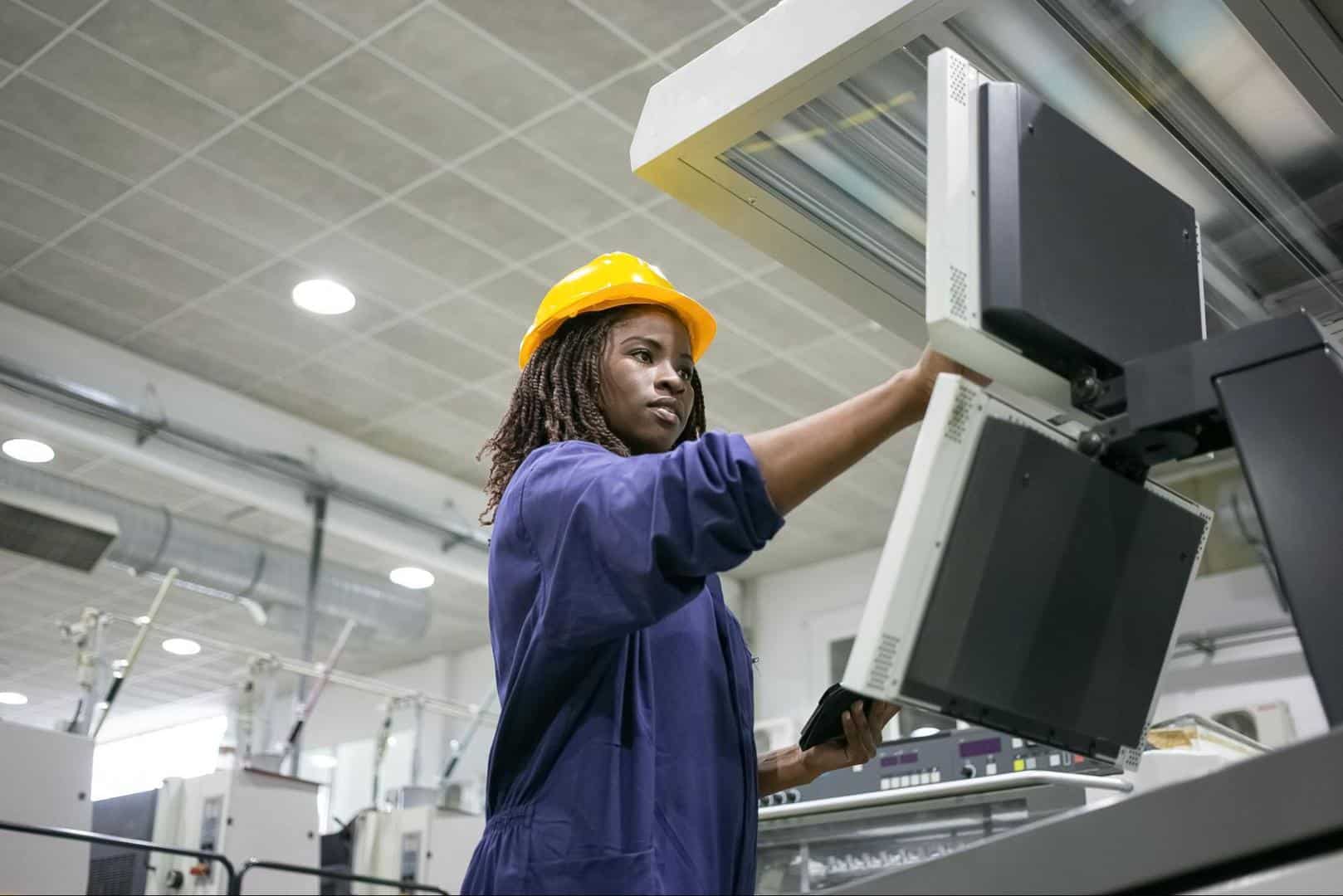The quality and durability of machined parts and aerospace components are put to the test every time they soar through the clouds at 30,000 feet.
Consisting of thousands of machined components, the degree of manufacturing complexity behind precision CNC machining aerospace parts is vast. Take for instance the Boeing 747, which consists of more than 6 million parts and 5,500 hours of build time. With such complexity, maintaining strict industry standards can be challenging.
Today our guide covers:
- The Role of CNC Machining in Creating Aerospace Machine Parts
- The Types of Aerospace Machined Parts
- How Aerospace CNC Machining is Used Today
The Role of CNC Machining Aerospace Parts in the Aerospace Industry
Computer numerical control (CNC) machining uses computer-controlled cutting tools (like end mills and drills) to remove materials from a workpiece, thereby shaping an aircraft component.
When compared to the machining capabilities of a standard machine shop, CNC machining is one of the few manufacturing processes that can deliver the unique structure and high degree of precision, uniformity and efficiency required to economically produce such parts.
Given the complexity and variety of modern aircraft parts, the aerospace industry is rather dependent on CNC machining services.
Need Reliable, Highly-Precise Aerospace Machining?
Moseys is your answer — we have all the experience and expertise to deliver.
Get a Quote Today
Types of Precision Machined Aerospace Components
CNC machining has fueled the way for many of today’s leading aerospace companies.
From working with high-performance polymers to create strong yet lightweight plastics to designing and producing intricate specialty parts with tight tolerances and low surface roughness, keeping up with the fast-paced demands of aerospace innovation is challenging.
That’s where the benefits of CNC machining aerospace applications come into play. While the capabilities of CNC machining are vast, no two properties dictate the materials used when CNC machining aerospace parts more than strength and weight.
Lightweight Metal Components
Since strong metals are required for an aircraft’s functional structure, it can be challenging to find metals that are lightweight enough not to impact fuel efficiency while also being resilient enough to withstand the immense forces and temperature changes experienced in flight.
As a result, aerospace companies often use titanium, copper and brass alloys over heavier metals like stainless steel. Since titanium is 50% lighter and almost 30% stronger than steel, it’s widely used in aerospace machined parts.
Another popular metal used in a wide range of aircraft components is aluminum or aluminum alloys. Despite being about half as strong as titanium, aluminum is an easily machinable metal and more cost-effective, making it well-suited for a broad range of aircraft parts.
High-Performance Plastics
Polymer materials like PTFE, PCTFE, and PAI are often used in aerospace applications because they provide significant engineering design advantages, such as specific strength properties with a weight saving between 20% to 40%, lower thermal expansion properties and the ability to meet stringent dimensional stability requirements.
Additionally, polymer plastics are impact, abrasion and vibration-resistant, and more lightweight than metals, which is why they’re often used for interior aircraft components like:
- Bearings
- Interior wall panels
- Aircraft doors
- Ventilation ducts
- Seating and service trays
- Wire conduits
How CNC Machining is Used in Aerospace Applications
The benefits of CNC machining extend beyond the production of aerospace end-user parts.
For example, without CNC machining, aerospace research and development would not be able to excel as rapidly as it has, since deriving and testing new concept iterations with the ability to make quick revisions are impossible without CNC machining.
Aerospace Machined Parts Used in Aviation
From creating the small, connected modules that form the navigational system to machining large fuel bodies, transmissions and landing gear, passenger planes, helicopters, fighter jets and cargo planes all rely on CNC milling for the precision production of state-of-the-art aircraft components.
Aerospace Machine Parts Used in Space Exploration
CNC machining helps companies like SpaceX, NASA and Blue Origin to design, process and manufacture aerospace components from start to finish. Whether it’s manufacturing the outer shell of a rocket or the smallest component of a jet engine, CNC machining delivers the high level of precision needed.

Overcoming Common Aerospace Machined Parts Issues
While CNC machining enables machinists to overcome many of the manual limitations often faced in the standard manufacturing process, there are still issues that pre-programmed software can’t help you with.
To help cut back on aerospace machining challenges, here are six tips:
- Deploy Simulation Technology – Mitigate machining errors by simulating the accuracy of the g-code in your CNC system.
- Create Specialized Production Lines – Consider revising your manufacturing system based on product types and characteristics to enhance process flows.
- Reduce Clamping Times – Improve the efficiency and reliability of CNC machining by designing the fixture correctly and minimizing the preparation steps.
- Invest in Scalability – Boost your machining output by investing in high-speed milling machines and other Swiss machining tools.
- Learn All Configuration Tools – Maximize your aerospace machining potential by getting to understand the full depth of machining capabilities supported by your CNC system.
- Maintain Industry Standards- Quality control certifications like AS9100 Revision D, ISO 9001 2015, and ITAR help ensure machined parts meet or exceed industry standards.
Reach New Heights with Mosey’s Aerospace Machined Parts
Aerospace companies are all too familiar with the strict quality and industry standards they face.
With supply chain fortification often an issue, it’s rare to find a machine shop with a transparent manufacturing process from start to finish and inclusive supply chain management. Featuring virtually managed inventory and quality control guarantees, Mosey’s has been meeting the demands of air and space exploration for over 46 years.
For uncompromising accuracy, quality, and longevity, you can count on Mosey’s to source, design, and machine only the best materials for all your manufacturing needs.
To learn more about our CNC machining processes for aerospace, get a quote for precision machined aerospace components today.